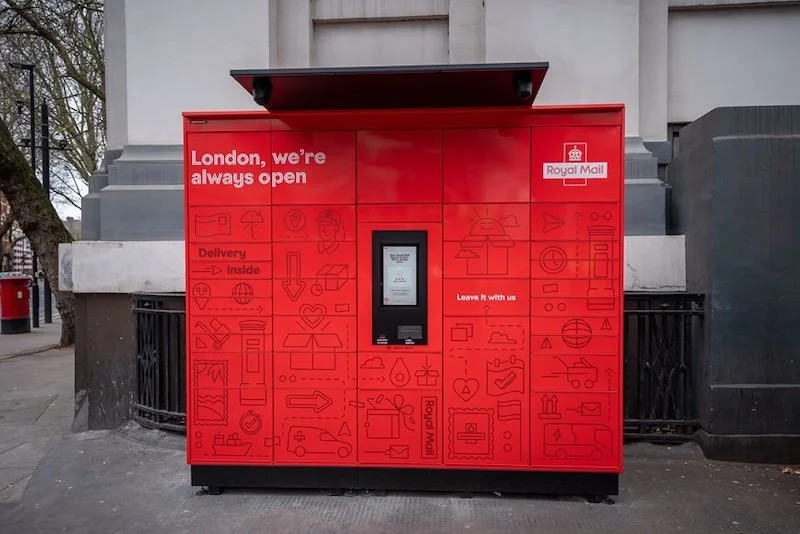On the night of October 20, 1816, a Royal Mail coach stopped to make a delivery at an inn near the cathedral city of Salisbury, in the English county of Wiltshire, where it was attacked by a lion. The lion, a female, leapt at the lead carriage horse, clawing its neck and chest. The horses screamed and reared. A guard, stationed on the back of the coach, tried to shoot the lion with his blunderbuss. There were two passengers inside the coach. They leapt out, ran for the inn—it was called The Pheasant—and blocked the door. A large mastiff, either very brave or very foolish, seized the lion’s leg in its jaws. She let go of the horse, whipped around, and attacked the dog. It ran, but the lion caught it and killed it 40 yards from the carriage.
Because English mail coaches were not generally attacked by large predators, particularly large predators not native to England, it seems safe to assume that the lion’s appearance caused a great deal of surprise. What had happened was that a traveling menagerie had stopped for the night near the inn, and the lion had escaped. After the attack, some people from the menagerie were able to trap the lion under a granary. The keeper crawled under after her, and somehow—this part of the story is vague—managed to tie her up.
The lion was brought back to her cage, alive. The mail did not stop for anything, even a lion attack, in the early 19th century. This batch of post was coming from Exeter, in Devon. The coach reached London only 45 minutes late.
On Tuesday, after days of confusion, speculation, and mixed messaging, the Big Ten announced that it was canceling its fall football season. The Pac-12 quickly followed suit. Actually, both conferences scrapped their entire slate of fall sports, with an eye toward moving them to the spring. But the media attention around the decision focused almost entirely on football, and it’s not hard to see why. In this strange era of large-scale calendar erasure brought about by COVID-19—you could call it cancel culture if the term weren’t already taken—we can feel which losses hurt the most, and the absence of college football will hit more people harder than the loss of water polo or soccer or any number of other sports that are equally beautiful and valid on their own.
The Big Ten’s and Pac-12’s announcements don’t mean there will be no college football played this year. The split among Power Five conferences reflects the general split in the country, with part of the population having ruled itself exempt from the medical logic that applies to the other part; in this case, the SEC and the ACC seem determined to go ahead with their most profitable extracurricular activity regardless of what doctors in Minnesota say. (The Big 12 appears to be waffling somewhere in between.) It seems likely, however, for liability reasons, if not human ones, that other conferences will follow the Big Ten’s lead. The less football that remains on the schedule—smaller conferences like the MAC and the Mountain West have already canceled their fall seasons—the more likely it seems that the holdout conferences will fall in line. So what happens next is an open question. Maybe there will be college football in the fall. Maybe there will be college football in the spring if the virus lets up. Maybe there will be no college football at all.
In one sense, we’ve been here before. NCAA football is not the first major sports competition to have been forced into postponement by COVID-19. It’s not the fifth. It’s not the 10th. We’ve already seen the Olympics, the NBA, MLB, every top European soccer league, the NHL, and others fall off the calendar. Some of these leagues are now back, which gives the loss of college football a deeper aura of sadness and futility because we know it didn’t have to happen this way. If the United States had adopted an approach to the pandemic that was designed to eradicate the virus, rather than going the equally compelling route of adopting an approach that was designed to score maximum points in our kids’ karate teachers’ Facebook comments, the games might have started on schedule. But the basic outline of the cultural loss, the sacrifice of something we love to the disease, is familiar.
That’s how it feels today, anyway. What I want to argue here, though, is that losing college football is, in fact, not quite the same as losing those other sports—that it will feel different as the year goes on; that it will have different repercussions. College football, compared to pro sports and the Olympics, operates within a denser and more complex network of local affiliations, and therefore straddles the line between the super-generalized Sports As a TV Show spectacle of the NFL and the more community-rooted everyday-ness of high school sports. For all college football’s (many) problems, its loss will send more vibrations down more sensitive cultural threads than the loss of some objectively “bigger” sports. It has a chance to have more of an impact on how we think about the virus and, perhaps in a subtle way, how we think about one another.
In my study at home, I have a leather-bound 1816 edition of a book called Cary’s New Itinerary. That’s the short title, anyway; the full name is Cary’s New Itinerary: Or, an Accurate Delineation of the Great Roads, Both Direct and Cross, Throughout England and Wales; with Many of the Principal Roads in Scotland, From an Actual Admeasurement Made by Command of His Majesty’s Postmaster General, for Official Purposes—and, well, it keeps going on from there. No one loved a good 900-word title like the English of the Regency era. It was basically a small and territorially aggressive island of mid-career Fiona Apples.
Cary’s New Itinerary (we’ll stick with that) is one of my favorite books. It’s literally a timetable: It describes the routes of the coaches in and out of London along Britain’s major roads, where they stopped at inns with names like the Spread Eagle and the Swan with Two Necks. My 200-year-old copy is browning with age, and the pages are fragile, but it’s still possible to use it to work out the exact route a person might have taken to get from almost anywhere in England to almost anywhere else. It’s possible, for instance, to trace the route taken by the Exeter mail coach on the night it was attacked by the lion.
Like all timetables, Cary’s New Itinerary is a window into the civilization that created it. What it makes me think about, mainly, is how much hard work goes into knitting a country together, how the enormous difficulties of physical space and regional difference can only be overcome with great practical and imaginative labor. In 1816, England had just beaten Napoleon at the Battle of Waterloo—the Little Brown Jug of the late Georgian period—and was poised for a century of runaway imperial expansion (with many horrific results). Yet, it still took more than 24 hours for the fastest coaches to travel the 175 miles between Exeter and the capital, a journey that can now be whooshed through on the A303 roadway in about the time it takes to read the title of Cary’s New Itinerary out loud. England was the most powerful country in the world, but there were many stretches of the country—parts of the Devon coast, for instance, where the roads were too rough for wheeled conveyances. They could only be reached on horseback or on foot.
A stagecoach timetable, then, was, among other things, a powerful imaginative act. It was an interface that put previously inaccessible villages in touch with one another: You only had to drag your finger across the index to unite the whole country. It was a way of imagining places as a place. And it was enabled, in large part, by the invention of another practical instrument with astonishing imaginative depth: the mail service, which made it possible to be in touch with places you did not visit, and thus linked the country intellectually in the same way that the stagecoach linked it physically. The Royal Mail paid for the survey of the roads on which Cary’s New Itinerary was based; mail coaches were the fastest long-haul transportation of the era, and were so reliable their arrivals and departures were used to set clocks. Space was vast, and travel was slow and dangerous, but you could send a note in the post, and it would arrive promptly, even if a big cat sprang on the coach.
What I’m trying to say with this increasingly unmanageable metaphor is that I think college football is something like the Regency coach timetable of American athletic competition. Professional sports in 2020 seem mostly to assume a world where the knitting-together process I talked about above has already been accomplished. There is a nation; at an appointed time, it turns its eyes to the satellites, watches an entertainment, and shares a controlled experience. A league like the NFL is so top-down it’s forever at risk of forgetting the bottom exists; this is why the crowd at the Super Bowl, America’s biggest TV extravaganza, is full of milquetoast corporate junket-goers, who give it both the energy and the approximate demographic composition of the bench outside a suburban mall’s Bath & Body Works. The NBA, while more connected to local cultures than the NFL, is so small and so relatively unified that it sometimes seems to move in a well-oiled parallel universe—its response to the pandemic was to zip itself into a bubble.
College football, by contrast, is a baffling and inefficient amalgam of top-down and bottom-up. It’s run by exploitive gerontocrats. It mines profit from extremely dangerous unpaid labor performed by young people—often literally by teenagers—and does everything it can to keep its volunteer workforce powerless; there’s a cynical case to be made that the current rush to abandon the fall season has less to do with any new developments in the pandemic than with the emergence of the #WeAreUnited and #WeWantToPlay player movements, which seek to give the athletes who risk their bodies to play the sport more say over how it’s run. It’s a commoditization of violence that frequently overshadows the educational institutions to which it’s bizarrely attached.
At the level of fans and players, though, college football is something else again, something much more various and locally specific than any primarily top-down competition. I know Philadelphia isn’t Phoenix and Eagles fans aren’t Cardinals fans—they’re two different birds! But the brand identity of the NFL is the same everywhere, and there’s always the sense that the brand transcends the local experience. The local experience is an accident that happens in pursuit of fusion with the brand. In college football, the local experience is still the main thing: TV chases it rather than the other way around.
In college football, the stadiums are more divergent, the cultures are more divergent, and the skill levels are more divergent. The towns are more divergent; where the NFL has two teams outside Manhattan, college football has one right in the heart of Manhattan, Kansas. The conferences make a gawky patchwork of the national map. The run-up to the Big Ten’s decision to suspend its season was marked by an anarchic public debate unlike anything we’ve seen, with players agitating to play, coaches going off script to attack their own conferences’ priorities (Jim Harbaugh wants to fight everyone in the Big Ten even more than usual), individual universities loudly threatening to form ad hoc breakaway microleagues (the University of Nebraska wants to fight everyone and everything on earth), and reporters’ sources contradicting each other with whiplash-inducing frequency.
College football exists, in other words, somewhere in the overheated engine room of the process of cultural adhesion whose completion the NFL takes for granted. Because fans are more focused on their own teams and schools than on the game at large, and because the game at large is so absurdly chaotic, college football is constantly doing the work of figuring out what it is. That it does not do this work particularly well or particularly honestly is almost beside the point; the point is that it’s a game about taking disparate places and turning them into a place. It’s an interface. Every time two teams play, every time fans caravan in from farm country with their foam butt pads and their coolers and their grandkids and their memories of the year we saw Andre Ware play the run ’n’ shoot the way God meant for it to be played—every time that happens, a little figurative mail coach blows through the middle of a figurative town square and a little span of distance is collapsed.
Just now, of course, the things that make us feel closer together are eroding pretty much everywhere. The U.S. Postal Service is itself in crisis; the Trump administration is apparently trying to break the mail less than three months before an election during which it will be unsafe for millions of people to vote in person. The relatively well-defined, purposeful national lockdown of a few months ago—inadequate and badly disorganized, but with at least a shadow of national purpose behind it—has blurred, for many people, into a kind of ad hoc perma-tine: a hazy, open-ended quarantine with a deep sense of futility underlying it. I haven’t seen my parents, 1,500 miles away, in almost a year. A lot of people are in a similar state. Distances seem larger. Connections we used to take for granted are growing frayed.
I don’t want to imply that the loss of college football would lead to the disintegration of our national idea (that won’t happen until Disney starts charging $30 for a movie rental … oh, wait). Postponing the season was the right decision for the Big Ten and the Pac-12, one that should have been made weeks or months ago and that other conferences should adopt immediately. And the shock might jolt the game into some needed reforms, as my colleague Rodger Sherman wrote yesterday. But it breaks another strand of the rope. It takes away a small but meaningful force of unruly human connection. A mile will seem longer because of this; it will make us feel farther apart. The lion is in among the horses, and it’s not at all clear how, or if, it’s going to be restrained.
Source link


